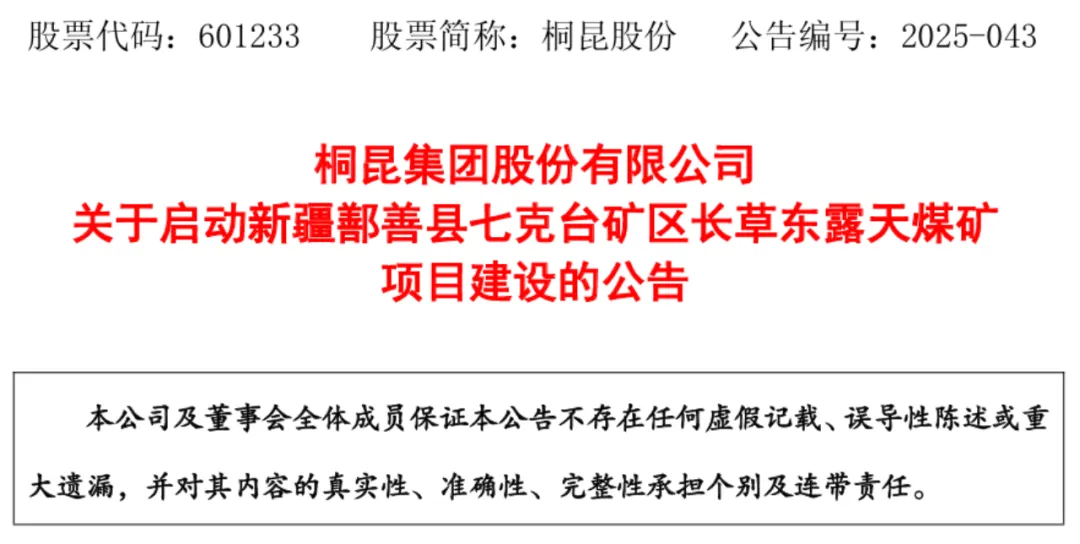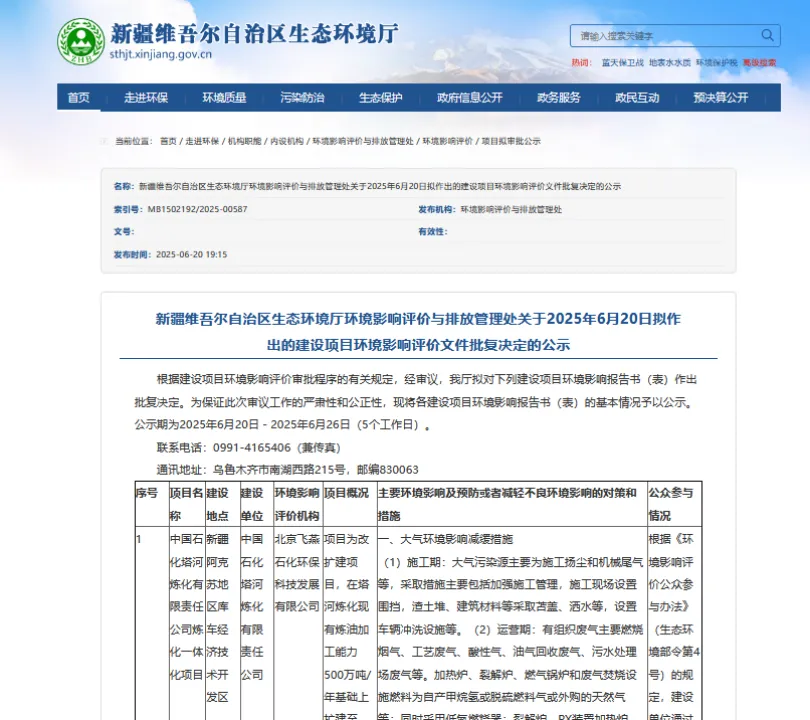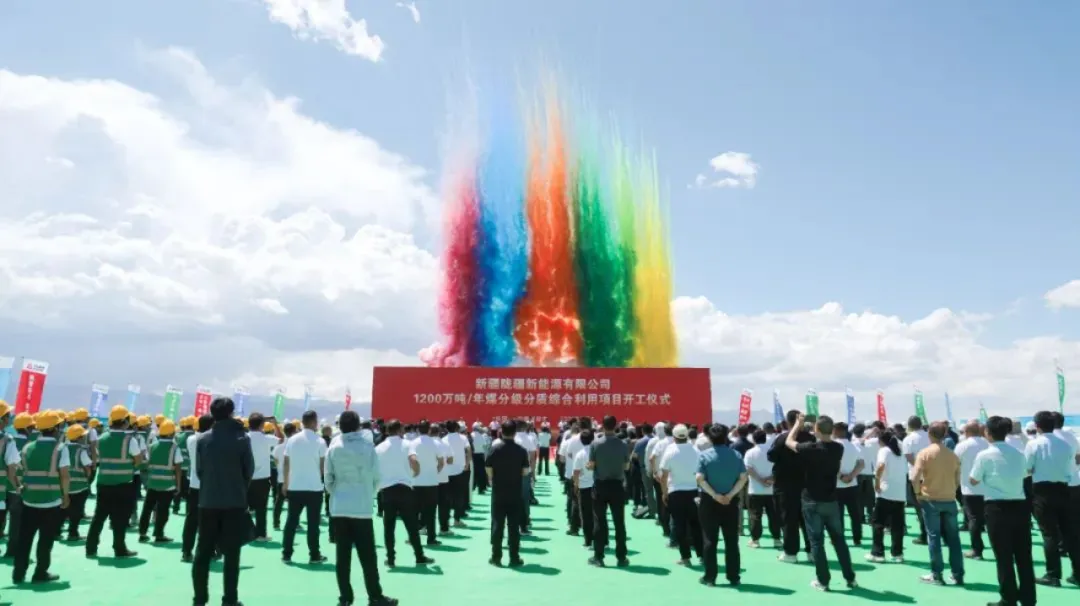1. Xinjiang Textile Capacity Expansion Drives Upstream Chemical Industry Investment Boom
in recent years, Xinjiang's textile industry has shown rapid growth, and its gray cloth and fabrics have become an important force that cannot be ignored in the global market. Driven by the continuous expansion of weaving capacity, the upstream refining and coal chemical industry ushered in a new round of investment peak. According to statistics, the total investment scale of newly planned and started large-scale chemical projects in Xinjiang has exceeded 90 billion yuan recently, forming a whole industrial chain layout from coal mining to high-end polyester materials.
Analysis on Investment Layout of Key Chemical Projects in 2.
(I) Hengyi Energy 2.4 million Ton Coal to Ethylene Glycol Project
project Overview: Hengyi Energy Technology (Turpan) Co., Ltd. invested in the construction of a 2.4 million-ton/year high quality fiber coal-to-ethylene glycol project in the coal-based new materials recycling industrial park of Turpan Economic Development Zone, with a total investment of 25.7 billion yuan and a total area of 2.5375 million square meters. The planned construction period is 36 months.

Location advantages: the project site is adjacent to the second area of Aidinghu Coal Mine, relying on the rich local coal resources, the land in the site is flat and has no environmentally sensitive targets, and has the conditions for large-scale development.
Economic and social benefits: directly create more than 2000 jobs, drive coal mining, logistics and transportation and other upstream and downstream industries to indirectly employ more than 10,000 people, forming an industrial cluster effect.
(II) Tongkun shares Xinjiang energy strategic layout
coal Mine Project: Changcaodong Open-pit Coal Mine Project in Qiketai Mining Area of Shanshan County, started in June 2025, with a total investment of 6.144 billion yuan, a designed annual production capacity of 5 million tons (regular 3.5 million tons + reserve 1.5 million tons) and a planned land area of 29.9 square kilometers.

Synergies:
internal consumption: the annual output of coal can meet the 500000 tons of fuel coal demand for Zhongkun New Materials and Yuxin New Materials Cogeneration Project.
Technical transformation: Xinjiang Zhongkun New Materials plans to invest 1 billion billion yuan to implement coal-based transformation of natural gas-to-ethylene glycol project, with an annual demand of 1.4 million tons of new raw coal.
Strategic significance: to build a dual energy system of "crude oil + coal", break through the bottleneck of raw material supply, and improve the self-sufficiency rate of polyester chemical fiber industry chain.
(III) Sinopec Tahe Refining and Chemical Integration Project
capacity upgrade: On the basis of the existing 5 million tons/year refining capacity, it will be expanded to 8.5 million tons/year, and 800000 tons/year ethylene and 800000 tons/year aromatics production units will be added, with a total investment of 29.987 billion yuan.

Location layout: The project is located in the Kuqa Economic and Technological Development Zone, relying on the crude oil resources of the Tahe River, forming a direct railway line network for 18 types of products such as gasoline, diesel, and aviation kerosene.
Approval progress: June 20, 2025, the autonomous region's ecological environment department environmental assessment approval, publicity period of 5 working days.
(IV) Xinjiang Longjiang Coal Classification and Quality Utilization Project
technology Integration: The Hongshan Industrial Park Project in Naomaohu Economic and Technological Development Zone has a total investment of 27.4 billion yuan, integrating 7 core technology units such as coal screening and crushing, dry distillation and tar deep processing.

Economic indicators: the estimated annual total income is 15.4 billion yuan, the tax revenue is 1.7 billion yuan, and 2000 jobs are provided.
Technical highlights: deep integration of coal liquefaction, aromatization, coal hydrogen and other advanced processes to achieve clean and efficient utilization of coal.
3. Industrial Transfer and Regional Layout Evolution
migration Trajectory of Traditional Industrial Belt in (I)
from 2016 to 2017, the proportion of polyester production capacity in Jiangsu and Zhejiang declined from the dominant position, and the industry in southern Jiangsu shifted to northern Jiangsu and Anhui, and then formed a multi-point layout in Henan, Hubei, and Jiangxi. During the same period, the proportion of production capacity in emerging production areas such as Chongqing, Xinjiang and Anhui increased significantly.
(II) industrial policy orientation in Xinjiang
"The Fourteenth Five-Year Plan clearly states:
accelerate the development of new polyester material industry and build a guarantee system for textile raw materials.
Implementation of chain extension and chain supplement strong chain project to promote the upgrading of modern chemical industry
strengthen the cultivation of private enterprises and plan to promote the construction of 30 major projects by 2025
enhancing the energy industry's support for high-quality development
Prospect of Coordinated Development of 4. Industry Chain
xinjiang textile industry is through the "textile-refining-coal chemical" vertical integration, the formation of three major competitive advantages:
cost advantage: relying on the local conversion of coal resources to reduce the cost of raw material transportation.
Scale advantage: four key projects to form a 10 million ton capacity cluster
policy Advantage: Superposition of National Development Zone Platform and Industrial Aid Policy
with the projects under construction put into operation one after another, it is expected that Xinjiang will form a complete "coal-chemical-textile" industrial chain by 2028, and the proportion of polyester production capacity is expected to exceed 15%, becoming an important pole in the global textile industry map. This industrial migration not only reshapes the domestic chemical industry pattern, but also provides a replicable industrial cooperation paradigm for countries along the "Belt and Road.
![]() +086 1911-7288-062 [ CN ]
+086 1911-7288-062 [ CN ]
















